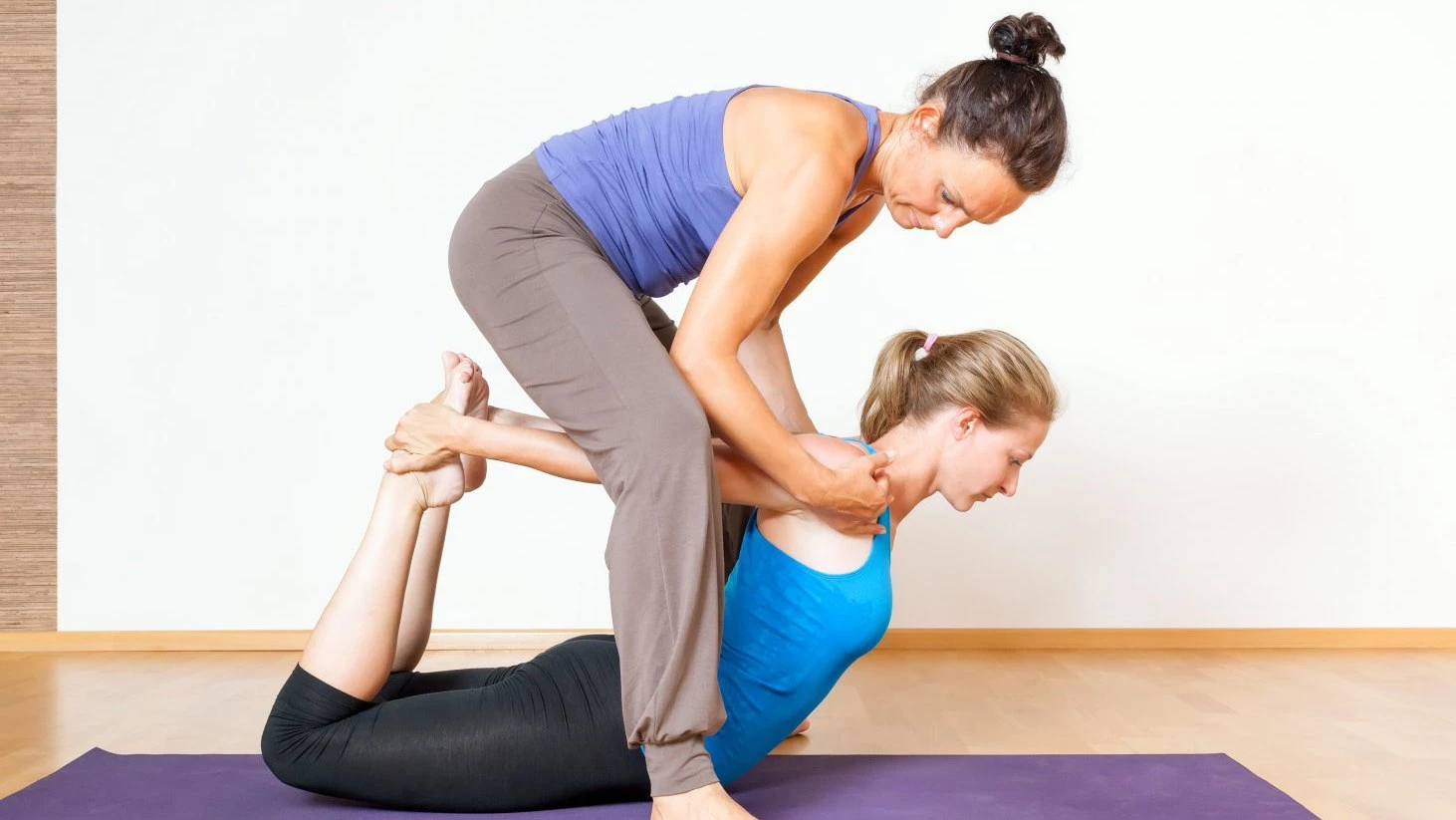Next Level: Maryland University of Integrative Health Launches Masters in Yoga Therapy Program

Yoga therapy is still a new and evolving professional practice. Yet interest in the medical and therapeutic applications of yoga is rapidly growing and making headway into the academic world.
Potential practitioners of therapeutic yoga can take their skills to the next level in Maryland University of Integrative Health’s (MUIH) newly developed Master of Science in Yoga Therapy, one of the first graduate degree programs in this developing field.
The MUIH program started in Fall 2013, originally planning for 20 students in the first year. However, the interest was so strong that admittance was expanded to 27 and a second cohort will start in April 2014.
While the university environment may seem like an unlikely setting for advanced studies in the therapeutic application of yoga, the university’s visionary leadership saw the potential.
“Our provost has an interest in yoga and yoga therapy, and she is a yoga practitioner herself,” says program director, Mary Lauttamus. “When she saw the International Association of Yoga Therapy standards, she realized that an 800-hour program was perfectly suited to a Masters in Yoga Therapy.”
IAYT is a professional organization for yoga teachers and therapists that supports research and education in yoga. Their mission is to “establish yoga as a recognized and respected therapy,” the first step of which is developing educational and accreditation standards.
There is little difference between the 1,000 hours required in current IAYT standards and the MUIH Masters program. Both have similar admission requirements, requiring that applicants have a minimum 200-hour training. However, as an accredited university, MUIH also requires a bachelor’s degree and every hour spent in the classroom is matched by two hours of practical applications.
The MUIH program includes foundational knowledge in yoga therapy, the theories of health and disease, and evidence-based practices in the field, while incorporating a broad base of perspectives and experiences in yoga therapy. The two-year weekend program is intended to accommodate professionals and people with busy lives.
Given this level of seriousness and professionalism, the emerging profession of yoga therapy is a good fit for a university degree.
“The university setting is ideal for this kind of program,” says Lauttamus. “The level of academic rigor is very high. Having a Masters degree is typically the minimum it takes to get into a Western medical setting. It sends the message that there’s been a certain level of study.”
The training includes the basics of therapeutic yoga, physiology, anatomy and mind-body research, with a strong emphasis on students learning and speaking medical language. What sets this apart from studio-based yoga therapy trainings is the terminology and language of Western medicine, so yoga therapists can effectively communicate with medical professionals.
“Critical thinking skills are vital, because we are not lineage-based,” Lauttamus adds. “We have people coming from multiple backgrounds and in this setting, we’re asking students to develop strong information literacy. That way they can apply their knowledge to figure out what’s right for that client in that moment.”
The MUIH Masters program bodes well for the future of yoga therapy as a profession. The university administration, program faculty, and students are actively involved in cocreating highly professional yoga therapists. Lauttamus adds, “We are all working really hard to more clearly define the scope of work of a yoga therapist.”
It also points to an interface of yoga and physical therapy. The program enables students to become familiar with the physiology and pathology of joint conditions, and speak the language of physical therapy. However, Lauttamus emphasizes what sets the two modalities apart, and how they can complement each other.
“Yoga therapy is a completely relationship-centered practice. What we’re really asking is: How does this impact the person’s life? What is the client’s relationship to the disease? Because we’re never teaching the disease, we’re always teaching the person around it.”


